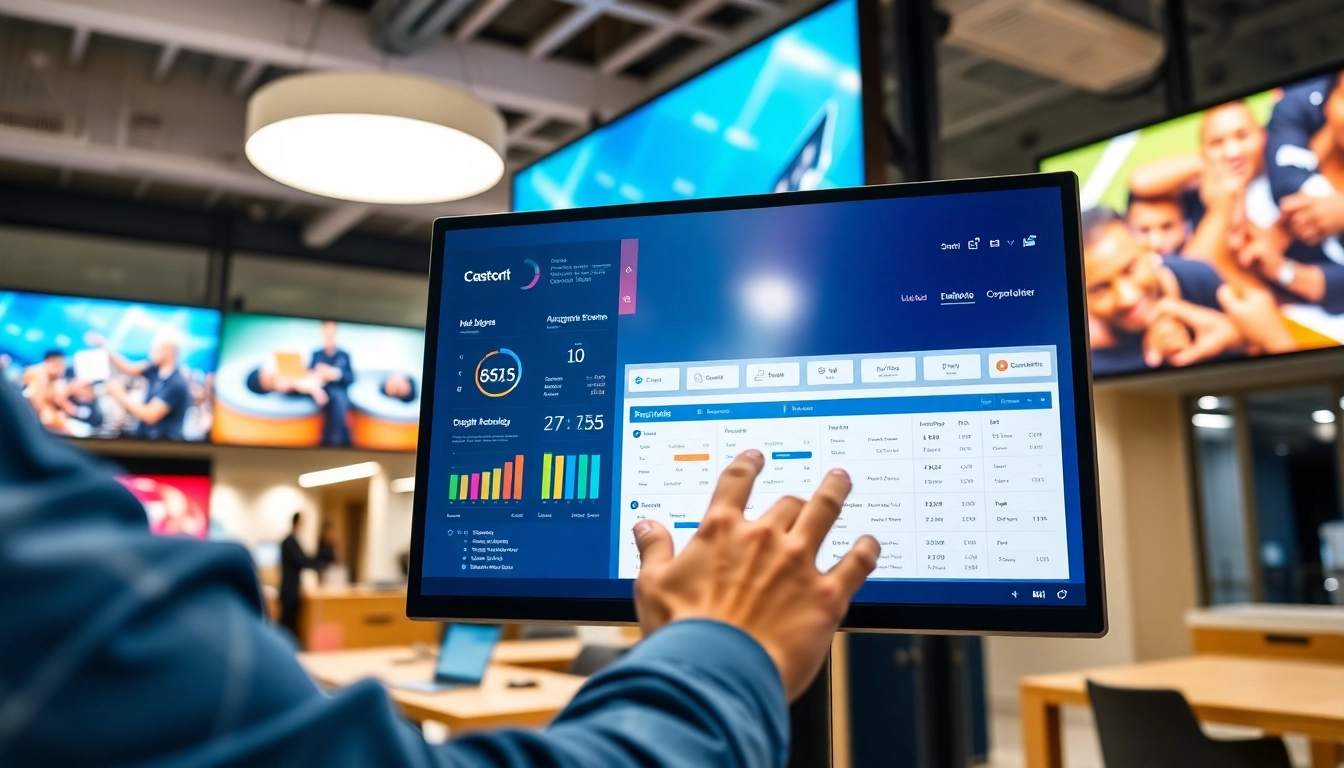Understanding Digital signage CMS for Effective Communication
In today’s fast-paced digital environment, effective communication is paramount for businesses and organizations seeking to engage their audience. A pivotal tool that facilitates this is a Digital signage CMS. This advanced content management system enables users to create, manage, and distribute content across various digital displays, enhancing communication strategies across numerous sectors.
What is Digital signage CMS?
A Digital signage CMS (Content Management System) serves as the backbone of any digital signage solution. It allows users to manage a diverse range of content including videos, images, text, and live feeds, which can be displayed on multiple screens throughout a venue. The CMS is typically cloud-based, ensuring easy access and management from different locations. It facilitates real-time updates, allowing organizations to communicate timely information effectively.
Key Benefits of Implementing Digital signage CMS
- Enhanced Communication: With the ability to display dynamic content, businesses can convey messages more effectively, whether for promotions, news, or informational updates.
- Cost-Effective: By managing content centrally and updating it in real-time, businesses can save on printing and distribution costs associated with traditional signage.
- Engagement: Eye-catching visuals and interactive content draw viewers, increasing engagement and interaction with the displayed material.
- Analytics and Insights: Many Digital signage CMS platforms provide tools for tracking viewer engagement and content performance, helping organizations measure the impact of their communications.
Common Use Cases for Digital signage CMS
Digital signage CMS technologies are versatile and can be employed across various industries. Common use cases include:
- Retail: Businesses use digital signage to promote products, showcase sales, and provide information about store hours.
- Education: Institutions utilize digital displays for announcements, event promotions, and to enhance student engagement in learning environments.
- Corporate Settings: Companies implement digital signage for internal communications, such as employee updates, company news, and operational metrics.
- Healthcare: Hospitals and clinics leverage digital signage for patient information, directions, and to promote health programs.
Evaluating Features of a Digital signage CMS
User Interface and Experience Design
A user-friendly interface is critical for any Digital signage CMS. The dashboard should be intuitive, enabling users with varying levels of technical expertise to navigate, create, and schedule content efficiently. A streamlined user experience enhances productivity and reduces the learning curve associated with new technologies.
Content Management Capabilities
Robust content management capabilities are essential. Users should be able to easily upload, organize, and schedule various types of media—from images to videos to live data feeds. An effective CMS should support multiple media formats and allow for seamless integration with third-party applications.
Analytics and Reporting Tools
Access to detailed analytics and reporting tools is crucial in assessing the effectiveness of digital signage campaigns. A good Digital signage CMS should provide insights into viewer engagement, content performance, and demographic data, allowing organizations to refine their strategies based on real-world feedback.
Getting Started with Digital signage CMS
Choosing the Right Digital signage CMS for Your Needs
Selecting the right Digital signage CMS involves understanding your organizational needs. Factors to consider include:
- Scalability: Choose a system that can grow with your business, accommodating an increasing number of displays or content types as needed.
- Support and Training: Opt for a provider that offers ongoing support and training resources to assist in utilizing the CMS effectively.
- Budget: Assess not just initial costs but also ongoing subscription or licensing fees against available features.
Implementation Steps and Best Practices
Implementing a Digital signage CMS requires careful planning and execution. Key steps include:
- Define Goals: Identify what you want to achieve with your digital signage (e.g., brand awareness, product promotion).
- Content Strategy: Develop a strategy for content that aligns with your goals, ensuring it is engaging and tailored to your audience.
- Hardware Setup: Ensure proper hardware installation, including displays, media players, and connectivity.
- Training Users: Provide comprehensive training for all users to ensure they understand how to use the CMS effectively.
- Monitor and Optimize: After launch, continuously monitor performance and gather feedback to make necessary adjustments to content or strategy.
Integrating Existing Systems with Digital signage CMS
Integration capabilities are essential for maximizing the effectiveness of a Digital signage CMS. Many organizations have existing systems for customer relationship management (CRM), enterprise resource planning (ERP), or other marketing tools. A successful integration allows for a seamless flow of data, enhancing the content displayed and improving decision-making processes.
Measuring the Impact of Digital signage CMS
Key Performance Indicators to Track
To understand the effectiveness of your digital signage efforts, it is crucial to track relevant key performance indicators (KPIs). These may include:
- Viewership Numbers: Analyze how many people are engaging with your displays.
- Engagement Rates: Measure interactions such as touch response, participation in polls, or social media shares.
- Content Performance: Evaluate which types of content resonate most with your audience, helping inform future strategies.
- Return on Investment (ROI): Assess the financial impact of your digital signage through increased sales or brand awareness.
Case Studies: Success Stories with Digital signage CMS
Real-world applications illustrate the effectiveness of Digital signage CMS. Organizations in various industries have successfully implemented these systems, resulting in improved communication, heightened engagement, and increased revenues. By studying these case studies, businesses can glean valuable insights and strategies that can be adapted for their own contexts, further emphasizing the value of a digital approach.
Continuous Improvement and Updates
Digital signage technology evolves rapidly; thus, continuous improvement is necessary. Regular updates can enhance functionality and improve security, while ongoing evaluation of content strategies based on analytics helps maintain relevance in communication efforts. Organizations should commit to revisiting their digital signage strategies periodically to ensure they are meeting current needs and audience expectations.
Advanced Strategies for Digital signage CMS
Enhancing User Engagement with Interactive Content
Interactive content is a game-changer for digital signage. Engaging users directly through touch screens, video walls, or augmented reality can significantly enhance viewer experience and interaction. By utilizing features like quizzes, polls, or timely contests, organizations can create a more immersive environment that encourages active audience participation, fostering deeper connections with the brand.
Utilizing APIs for Custom Integrations
Application Programming Interfaces (APIs) allow for the expansion of the functionalities of a Digital signage CMS. Organizations can create custom integrations with various applications, enhancing their capabilities. For example, integrating with social media platforms can facilitate the display of user-generated content or real-time updates, making the digital signage experience more engaging and informative.
Future Trends in Digital signage CMS Technologies
The future of Digital signage CMS is bright, with several emerging trends poised to shape its evolution. Key trends to watch include:
- Artificial Intelligence: AI can be leveraged for content optimization, predictive analytics, and personalized viewer experiences.
- Increased Interactivity: Future systems will likely embrace more innovative ways to engage audiences through gamification and user-generated content.
- Remote Management Capabilities: As remote work continues to rise, the need for accessible cloud-based systems will grow, allowing teams to manage content and displays from anywhere.
- Sustainability: Emphasizing energy-efficient displays and eco-friendly content strategies will become increasingly important as organizations focus on social responsibility.















Leave a Reply